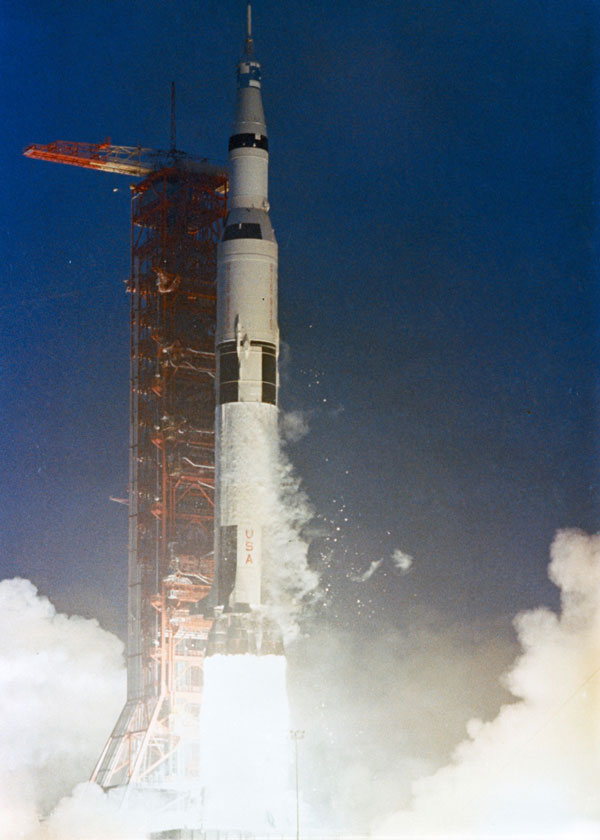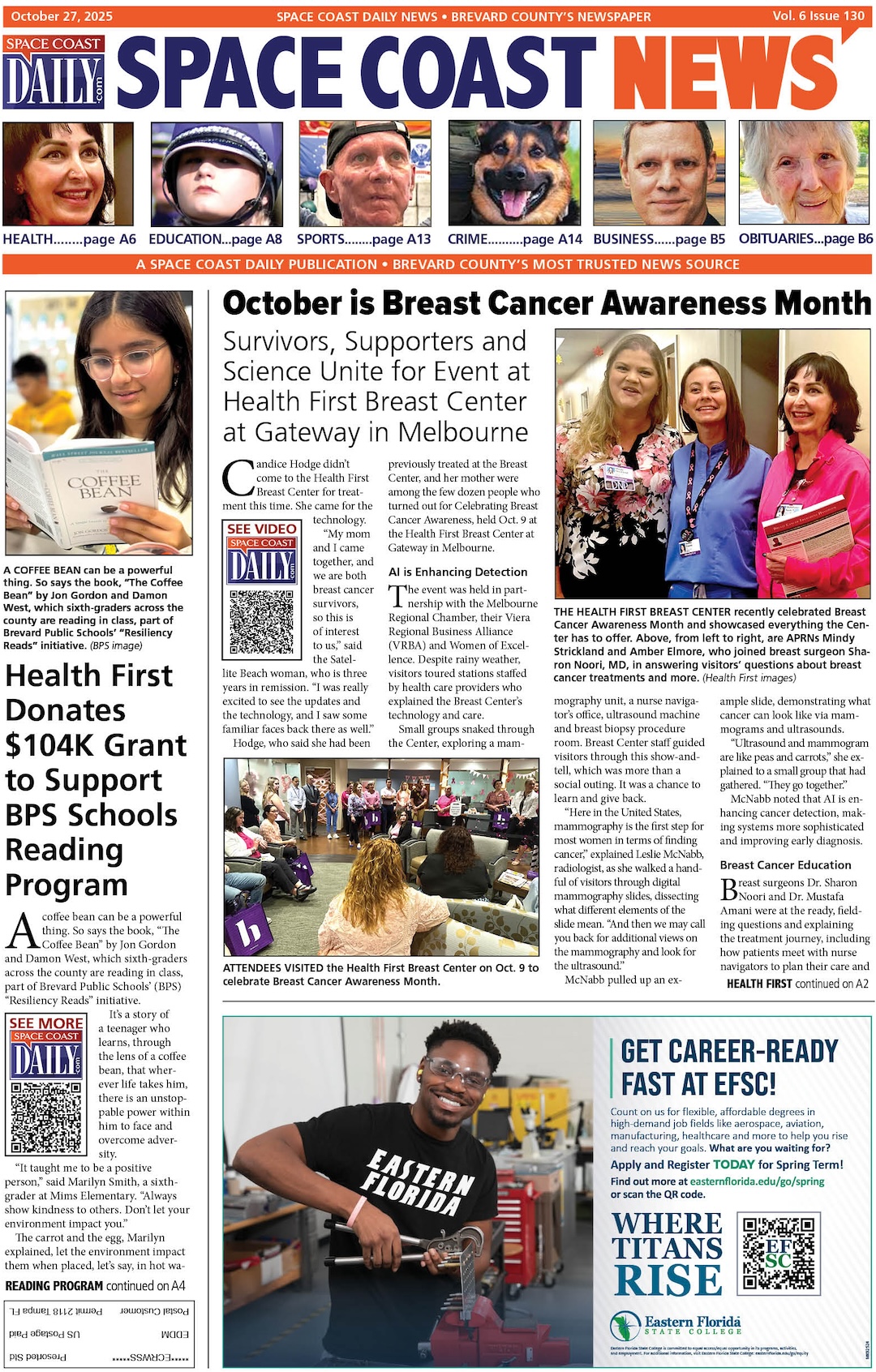THIS DAY IN HISTORY: The Lightning Strike That Nearly Ended the Apollo 12 Mission in 1969
By Space Coast Daily // November 14, 2025
November 14, 1969

BREVARD COUNTY, FLORIDA – On this day in 1969, Apollo 12—the second crewed mission to land on the Moon—launched from Cape Kennedy on a mission that almost ended before it truly began.
Just moments after liftoff, the Saturn V rocket carrying astronauts Charles “Pete” Conrad, Richard Gordon, and Alan Bean was struck by lightning twice within the first minute of flight.
The strikes caused a sudden and severe electrical disruption throughout the spacecraft, triggering multiple warning lights and knocking out crucial telemetry data inside Mission Control.
For several tense seconds, controllers on the ground struggled to interpret what appeared to be cascading system failures. Then, in one of the most remarkable displays of composure and technical expertise in NASA history, a 24-year-old mission controller stepped forward with a solution.
That controller was John Aaron, a young electrical engineer serving as the EECOM (Electrical, Environmental, and Consumables Manager) for the mission.
Aaron recognized the pattern of the telemetry dropout from a previous simulation and quickly offered a concise instruction that would become legendary in NASA lore:
“Try SCE to AUX.”
The command referred to switching the Signal Conditioning Equipment to its auxiliary mode—an obscure setting that few outside the backroom teams even remembered existed. Astronaut Alan Bean flipped the switch, and instantly the spacecraft’s data systems came back to life. With control restored and no lasting damage detected, Apollo 12 continued its mission, ultimately achieving a pinpoint lunar landing in the Ocean of Storms.
The incident remains a powerful example of teamwork, quick thinking, and the depth of technical skill within NASA during the Apollo era. Thanks to Aaron’s calm brilliance and the crew’s steady response, a mission that could have ended in disaster went on to become one of the most precise and scientifically productive landings of the Apollo program.












